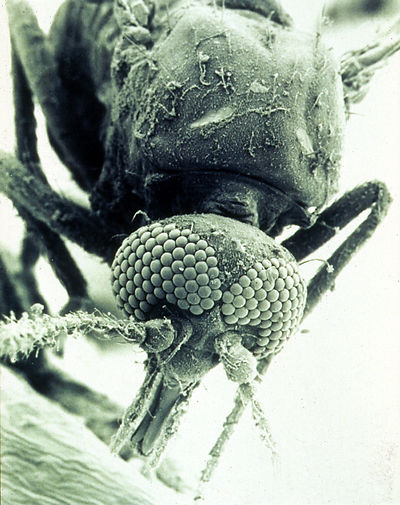West Valley Mosquito
& Vector Control District
Monday - Friday: 7:30 AM - 3:30 PM Phone: 909-635-0307
OTHER COMMON ARTHROPOD VECTORS
TICKS
CHARACTERISTICS
-
Small, spider-like, and round in size
-
Posterior contains the reproductive organs, legs, and the digestive tract (idiosoma)
-
Anterior consists of the head and mouthparts (capitulum or gnathosoma)
-
8 legs
-
There are two types, hard and soft shell ticks
-
Both female and male ticks blood feed
EFFECTS OF TICK ACTIVITY ON HUMANS AND ANIMALS
-
They are important disease-causing agents
-
Ticks transmit the widest diversity of pathogens of any blood-sucking arthropod including bacteria, protozoa, rickettsiae, and viruses
-
Tick-borne pathogens include ehrlichiosis, babesiosis, tularemia, tick-borne relapsing fever, Lyme disease, and Rocky Mountain spotted fever


WHAT ATTRACTS TICKS
-
Damp, shady, bushy, leafy areas
-
Tall, uncut grasses and shrubs
-
Heat and movement
-
Warm, moist, or wooded areas
-
Warm-blooded animals and humans
WHAT PREVENTS TICK BITES
-
Use insect repellents that contain 20% or more DEET (N,N-diethyl-m-toluamide) on the exposed skin for protection
-
Use products that contain permethrin on clothing
-
Wear light-colored clothing to easily view ticks, if attached
-
Avoid walking away from designated trails into bushy and grassy areas
WHAT TREATS TICK BITES
-
Use fine-tipped tweezers to remove tick from skin. Make sure you pull the tick straight out to avoid breaking the head off of its body. Do not twist the tick and make sure its mouth is not attached to your skin
-
Do not cover tick attached to your skin with petroleum jelly, nail polish, gasoline, or rubbing alcohol as these may increase your chances of infection
-
Wash the area of the tick bite with warm water and mild soap
-
If the bite is irritated, apply an antibiotic ointment or cream, and cover it with a bandage
-
To help relieve pain and itching, apply an ice pack to the bite for about 20 minutes, every hour, for about 6 hours or until itching and pain goes away
-
Nonprescription medicine such as a topical antihistamine, an anesthetic, or calamine lotion may help reduce pain, itching, redness, and swelling
FLIES

WHAT ATTRACTS FLIES
-
Animal fecal material
-
Garbage
-
Prefer south and east facing walls
-
Dirty environments
-
Warm, moist conditions
GETTING RID OF FLIES
-
Sanitation is KEY!
-
Pick up animal waste immediately
-
Keep garbage cans tightly closed
-
If using baited traps, position them FAR AWAY from the home
CHARACTERISTICS
-
2 wings
-
Short antennae
-
Sponging mouthparts
-
Larval stages are wormlike, called maggots
-
Pupal stage does not move, larvae migrate away from food source, form a cocoon
-
Feed on garbage, feces, some species feed on blood

Jim Baker, North Carolina State University, Bugwood.org
EFFECTS OF FLY ACTIVITY ON HUMANS AND ANIMALS
-
They are a nuisance and can reproduce rapidly
-
Can irritate animals as well as people
-
Can mechanically transmit bacteria/germs by contacting food and food prep surfaces
-
Some flies will bite humans and animals

Biting Midge

CHARACTERISTICS
-
Adults are less than 1/8 inch long
-
Gray in color
-
Two wings have dense hairs and give rise to pigmentation patterns
-
Large, compound eyes
-
Have a 15-segmented antennae
-
Mouthparts with cutting teeth on elongated mandibles in the proboscis
-
Females are blood suckers, males are not
-
Thorax extends slightly over the head
-
Abdomen is 9-segmented and tapered at the end
EFFECTS OF BITING MIDGE ACTIVITY ON HUMANS AND ANIMALS
-
Primarily, they are a nuisance to humans
-
Can cause allergic reactions in humans from the bites
-
Transmit viruses in animals such as Epidemic Hemorrhagic Disease (EHD) to deer and the bluetongue virus in sheep
-
No recorded cases of transmitting pathogens to humans in California
-
Individuals bitten may experience intense itching, swelling, and in sensitive individuals, seeping ulcerations that may last for several weeks
-
Carbon dioxide from the breath of animals and humans
-
Nightlights
-
Slow-moving or still water
-
Warm and damp areas, including decaying vegetation, mud, and the water that collects in tree holes, old tires, and various containers
-
Highest part of the body
WHAT ATTRACTS BITING MIDGES
WHAT PREVENTS BITING MIDGE BITES
-
Install proper screening for windows and patios to prevent them from entering residences and outdoor areas used for leisure
-
Ceiling and window fans can be used at high speeds to keep them out of small areas due to them being weak fliers
-
Wear light-colored clothes when you are outside
-
Wear protective clothing covering exposed skin
-
Do not wear perfumes or sweet-smelling lotions
-
Use insect repellent sprays, creams, roll-on sticks, and lotions containing Diethyl-meta-toluamide (DEET).

WHAT TREATS BITING MIDGE BITES
-
Ice packs, cleaning bite site with soap and water recommended.
-
Seek Physician advice for itching



